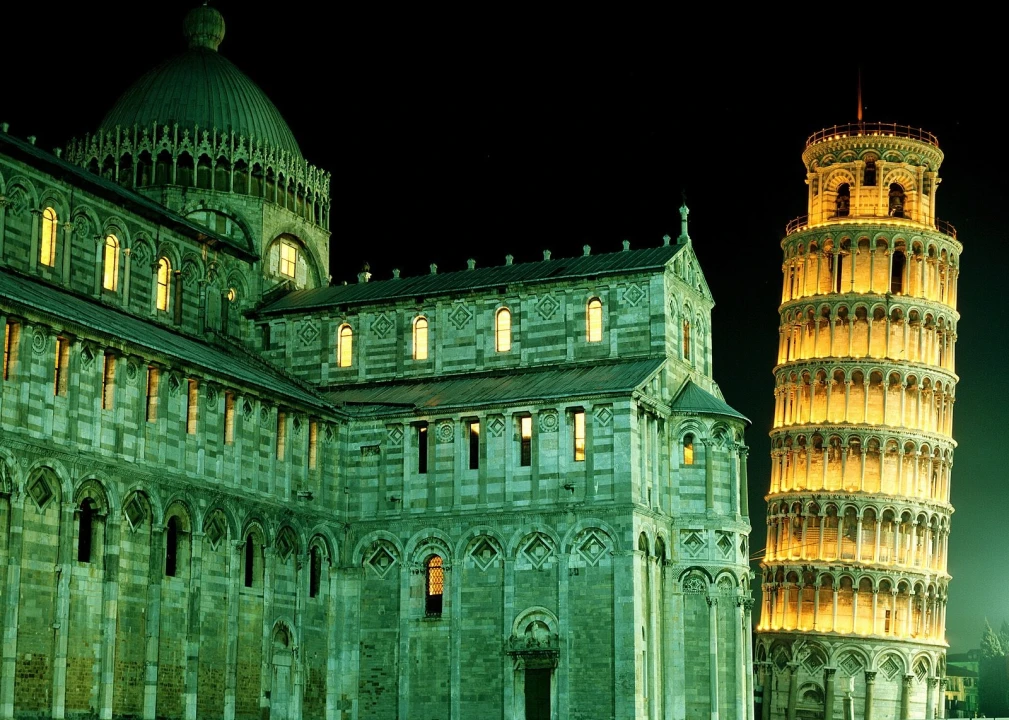The Leaning Tower, the icon of Pisa, is the most famous Italian monument in the world. Together with the Cathedral and Baptistery, the Tower makes up of a complex of works that poet Gabriele D’Annunzio defined as “Miracles,” hence the baptizing of the piazza that hosts them as Piazza dei Miracoli. Of course the city of Pisa’s first and foremost point of pride is the Tower, inclined as it is due to a sinkage of terrain; yet it also boasts a singular design of magnificent architecture, bearing arcades and loggias, a spiral staircase of 294 steps, and a belfry at its heights (184 ft), from which visitors can stare agape at the spectacular view.
Piazza dei Miracoli was named an UNESCO World Heritage Site in 1987.
The tower, however, did not come into popular consciousness as many believe - i.e. through the events recounted about Count Ugolino by Dante in his Divine Comedy. Ugolino, incarcerated in the Leaning Tower with his children, survived by devouring their limbs; nonetheless, it was actually another tower that served as Ugolino’s prison, near Palazzo dell’Orologio.
The Tower’s magnificence, adjacent to the Cathedral of Santa Maria, stands out from the skyline of the other edifices in the piazza, appearing suspended above a green cloud (that is, the grassy knoll on which they reside). The Baptistery, or the site of Catholic baptism; the Cathedral, symbol of spiritual elevation; and the old graveyard (camposanto), a final resting place; represent, according to some, a sort of cosmic calendar: birth, life and death. The Cathedral or Duomo, and the Baptistery, all white in color, are an unrivaled example of the Pisan Romanesque, particularly because the interior of the church features contrasting Arabesque influences.
Yet, be not deceived by the beauty of this Tuscan touristic destination. Pisa is an open-air museum yes, but it is also a vivacious, modern city whose daily rhythms find articulation in an intense student life. The large part of Pisa’s young nightlife happens along the Arno River (known as the Lungarno), while the University crowd that can be found frequenting the Piazza of Miracles during the day attend courses at Normale di Pisa, one of the oldest and most-respected of the world’s universities. The University stands in Piazza dei Cavalieri, also location of the Palazzo della Carovana, architectonic work by the great Giorgio Vasari.
The grandeur of the Ancient Marine Republic of Pisa is evident in its bridges, palazzi and in the numerous interior frescoes found around the city – not to mention Pisa’s excellent museum offering, from the Museo dell’Opera del Duomo and the Museum of Graphic Arts to Palazzo Reale and the Calci Charterhouse, or Certosa. Its Medieval center is bounding with churches, porticoes and diverse locales. The city is also the birthplace of noted painters, as well as an important Contemporary art hub. For instance, near the central railway station, the epic Keith Haring mural Tuttomondo colors one wall of the Church of Sant’Antonio Abate, while the fountain central to the station’s main piazza is a work by Arnaldo Pomodoro.
Not only culture, but strong seaside traditions are also native to Pisa, with beach tourism making a recent comeback here, particularly at Marina di Pisa and the rest of the nearby Tuscan littoral that composes part of the Natural Park of Migliarino, San Rossore and Massaciuccoli.




